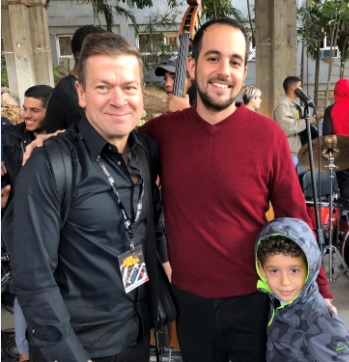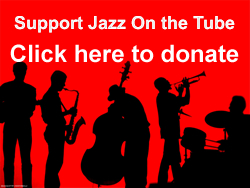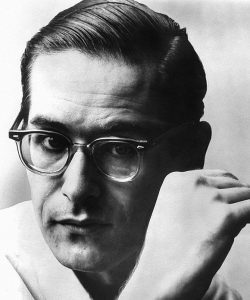Artist-Educators, Blog, Cuba, Cuban Jazz, Festivals, The Cuba-US connection, Video and audio
As many Jazz on the Tube subscribers know, Jazz on the Tube is taking an active role in providing support to the jazz community in Cuba.
One form this takes is providing Havana-based jazz educator Camilo Moreira with scores, videos, and other educational materials.
Last summer, we brought Camilo to New York City which included a day touring music and cultural sites in the Bronx with Bobby Sanabria.
How are Camilo’s kids doing? You tell me. Here they are with “Perdido.”
There’s good news and bad news here. The good news is the music itself.
This is a high school band (ENA) and these are mostly underclassmen, new to the band and I presume jazz itself.
The band has only been working together since October of 2017 and this was recorded in late January 2018.
The bad news is that, thanks to US politics, this group will not be performing in the Essentially Ellington competition at Jazz at Lincoln Center this spring, something many of us had been eagerly anticipating.
Here’s the band playing a Cuban classic “Son de Loma,” a composition by Miguel Matamoros that pays tribute to the island’s musical fertility…”Mom, I want to know where those singers are from. I find them very gallant.”
The next piece was a surprise.
The audience clamored for the Philharmonic Orchestra of ISA (Instituto Superior de Arte) to play an encore after a performance of a series of pieces by Ray Lerna of the Republic of the Congo at Havana’s Jazz Fest.
They’d run through all of Mr. Lerna’s pieces – so they played one by their beloved theory and composition teacher, our man in Havana Camilo Moreira!
Next, Camilo’s nephew, age 5, tries his hands at the tambores (drums.)
Surprisingly, drums are hard for the young to get their hands on in Cuba (as are trumpets in New Orleans), so I believe Camilo when he says this was his nephew’s first try at them. Not bad.
A parting picture…
Swedish trumpeter and composer Stefan Johnsson, Camilo and his nephew who is clearly ready for show business.
Johnsson collaborated with Camilo and the ENA Jazz Band as part of Havana’s Jazz Fest 2018. (Note: Sweden is one of 188 counties NOT participating in the US economic blockade against Cuba.)

People who buy the Jazz on the Tube Insiders Guide to Cuba are helping support these efforts and more. All profits go to the cause, the cause being helping jazz musicians in Cuba develop their art and pass it on to the next generation.
Great news!
You can now watch this video – and all Spanish language videos – with English subtitles. It’s free!
Click here for instructions on how to turn on English subtitles.
– Ken McCarthy
Jazz on the Tube
Go to Cuba with Jazz on the Tube as your guide:
Click here for details
Afro-Cuban culture, Blog, Cuba, The Cuba-US connection, Travel to Cuba
David Amram, Pete Seeger and Dizzy Gillespie
Interview
Download the mp3 here
“Decían que yo no venía y aquí usted me ve” (They said I wasn’t coming and here you see me!)
– Benny More
In 1977, David Amram visited Cuba for his first and only time with Dizzy Gillepsie, Stan Getz, and Earl “Fatha” Hines.
Now 40+ years later, this lifelong student of the music is returning to Havana where he’ll be featured at the Havana jazz Fest.
Jazz on the Tube helped make this possible. Thanks to all the supporters who help make Jazz on the Tube possible.
– Ken McCarthy
Jazz on the Tube
Go to Cuba with Jazz on the Tube as your guide:
Click here for details
Afro-Cuban culture, Blog, Cuba, Cuban Jazz, The Cuba-US connection, Travel to Cuba, Video and audio
The album that resulted from Amram’s
last trip to Cuba over 40 years ago
Interview
Download the mp3 here
40 years later David Amram returns to Cuba….
In 1977, the Carter administration gave permission to a group of US jazz musicians to travel to Cuba the first such trip in the fifteen years after the Revolution there.
Dizzy Gillespie, Stan Getz, Earl “Fatha” Hines, Ray Mantilla, and David Amram landed in Havana for a 36-hour musical whirlwind.
Now, forty plus years later, Amram is making a long-awaited return trip, this time for a week to perform at the Havana Jazz Festival – an invitation facilitated by Jazz on the Tube.
– Ken McCarthy
Jazz on the Tube
Afro-Cuban culture, Blog, Cuba, Cuban Jazz, Latin Jazz, Puerto Rico, The Cuba-US connection, Video
Cándido de Guerra Camero was born April 21, 1921 in Havana, Cuba, which makes him 96 and half years old (and one day) on the day of this recording.
Cándido is the most recorded conga player in the history of jazz having appeared on well over 1,000 albums.
Perhaps even more remarkable – and this is something many people have trouble wrapping their minds around – he is the first person to perform with multiple congas at the same time.
It may seem like an “obvious” idea, but as for all obvious ideas, someone had to go first and that somebody was Cándido de Guerra Camero.
Here’s the story straight from the Maestro’s mouth…
When Cándido first visited the US in 1946, in addition to being a percussionist, he also was a master on the bass, guitar and tres.
The rabbit hole goes even deeper…
Everyone is aware that Afro-Caribbean music was created from elements of African music. What fewer people are aware of is that the creative contributions have flowed both ways.
The practice of a single drummer performing with three or more drums first appeared in Senegal in the 1970s.
According to the liner notes of “Bougarabou: Solo Drumming of Casamance” (Village Pulse Records) the Jola of Senegal played just one drum, adding two later, then finally graduating to three or four in the late ’70s.
What stimulated this sudden innovation in an already well developed musical tradition?
Believe it or not, the evidence points to the influx and popularity of salsa records in the region.
Yes, salsa.
So we come full circle…From Africa to the Caribbean to New York City and back to Africa.
And who was on those records that changed the way the Jola of Senegal approached the drums? Almost certainly Puertorriquenos
Hanging around at home, Bacary Olé Diedhiou, Senegalese master of Bougarabou, gives an informal demo.
OK, we’ve informed you and hopefully entertained you.
Over forty musicians donated their time and talents to create the material we’ve shared with you in this series.
Over $10,000 in donated video production and post-production and web services were donated to bring you these highlights.
If you haven’t given yet, now’s the time. Thanks.
– Ken McCarthy
Jazz on the Tube
P.S. Our unique programming is made possible by help from people like you. Learn how you can contribute to our efforts here: Support Jazz on the Tube
Thanks.
Afro-Cuban culture, Artist-Educators, Blog, Cuba, Jazz on the Tube Interview, People, Podcasts, The Cuba-US connection
Click here if you have a memory of this artist that you’d like to share
Interview
Click here for Michele Rosewoman’s website
Reference videos from the interview
Michele Rosewoman and members of New Yor-Uba perform “The Egun and the Harvest”
Michele Rosewoman Trio performs ‘Akomado’ For Babaluaye
“Guerreros” Michele Rosewoman and New Yor-Uba at Dizzy’s Lincoln Center 10/13
New Yoruba, October 1984 in Warsaw, Poland a year after the group’s founding
Ed Kelly exploring Monk – “Well You Needn’t
Orlando “Puntilla” Rios – “El Breve Espacio”
– Ken McCarthy
Jazz on the Tube
Music credit: The Jazz on the Tube podcast theme song is “Mambo Inferno” performed by The Manhattan School of Music Afro-Cuban Jazz Orchestra conducted by Bobby Sanabria from the CD ¡Que Viva Harlem!
Afro-Cuban culture, Blog, Cuba, The Cuba-US connection, Travel to Cuba

Good news and bad news about the new travel policy for Cuba. (As of November 10, 2017)
I’m going to quote the Washington Post on the changes. As is often the case, you have to read the fine print to know what the real deal is.
Make sure you read the second paragraph carefully.
The most significant change under the new regulations is the elimination of the individual “people-to-people” category of educational travel. As before the Obama opening, most visitors to Cuba will again have to travel in licensed groups.
One remaining exception appears to be the “support for the Cuban people” category, which requires travelers to “engage in a full-time schedule” of unspecified “meaningful interaction with individuals in Cuba” and activities that support civil society.
I don’t like the weasel word “appears” in the phrase “one remaining exception appears to be…”
However, if this is the case, then citizens of the “Land of the Free” can still freely travel to Cuba if they fulfill the following two conditions:
1) They check off “support for the Cuban people” as their reason for traveling
2) They engage in a full-time schedule of “meaningful interaction with individuals in Cuba” and activities that support civil society.
What the heck does that mean?
Your guess is as good any anybody’s. That said, here are some ideas.
First, you can’t go to the beach and loll around all day drinking Cuba Libres. That’s only for Canadians – and the citizens of literally every other country in the world.
You have to do things like attend cultural events, go out for music, spend money in privately owned business like guest houses and restaurants, talk with Cubans about life and art and love, visit museums and learn about Cuban history and culture. In other words, be a respectful student of Cuban life and be a good will ambassador for the United States.
You also must avoid engaging in any transactions with the State Department’s list of evil Cuban companies. Print it out and bring it with you on your trip. You can find the list at State.gov under “List of Restricted Entities and Subentities Associated With Cuba”
It was previously recommended – and I imagine it’s still the case – that you keep a daily diary that documents that you did these kinds of “approved” things while there and retain those records for five years in case a US government agent wants to “zee your papers.”
Is this ideal? No, but it’s more than good enough for us to work with.
Note: Am I a lawyer? No. Am I giving you legal advice? No. I’m a music writer and these are my thoughts. Use them at your own risk.
Should you go to Cuba?
Absolutely.
If you love jazz and all the ingredients that have gone into its making, seeing Cuba is essential.
All your musical life you’ve heard “rumors” and “distant echoes” of Cuba and its music. To experience it full bore with no filter is a life-changing experience.
It sure was for me.
If you can manage it, do it before our beloved government takes away even this thread of a right.
For perspective, back in 1977 Jimmy Carter opened travel to Cuba. Reagan shut it down in 1980 and it stayed shut for 35 years. (Because the US is a free country, don’t you know.)
How to get there? Is it expensive?
It’s easy to get there. Just get on a plane. There are scheduled flights everyday out of places like New York City and Miami.
Is travel in Cuba expensive?
If you go with a packaged tour or use the “normal” travel industry, yes. Cuba is no bargain. Budget at least $400 a day (probably more) plus your airfare.
You could have an exponentially better time – better housing, better food, better entertainment – for about $100 a day.
How do you do that?
You have to go to an informed person.
How do you do that?
Easy.
– Ken McCarthy
Jazz on the Tube
P.S. Our unique programming is made possible by help from people like you. Learn how you can contribute to our efforts here: Support Jazz on the Tube
Thanks.




